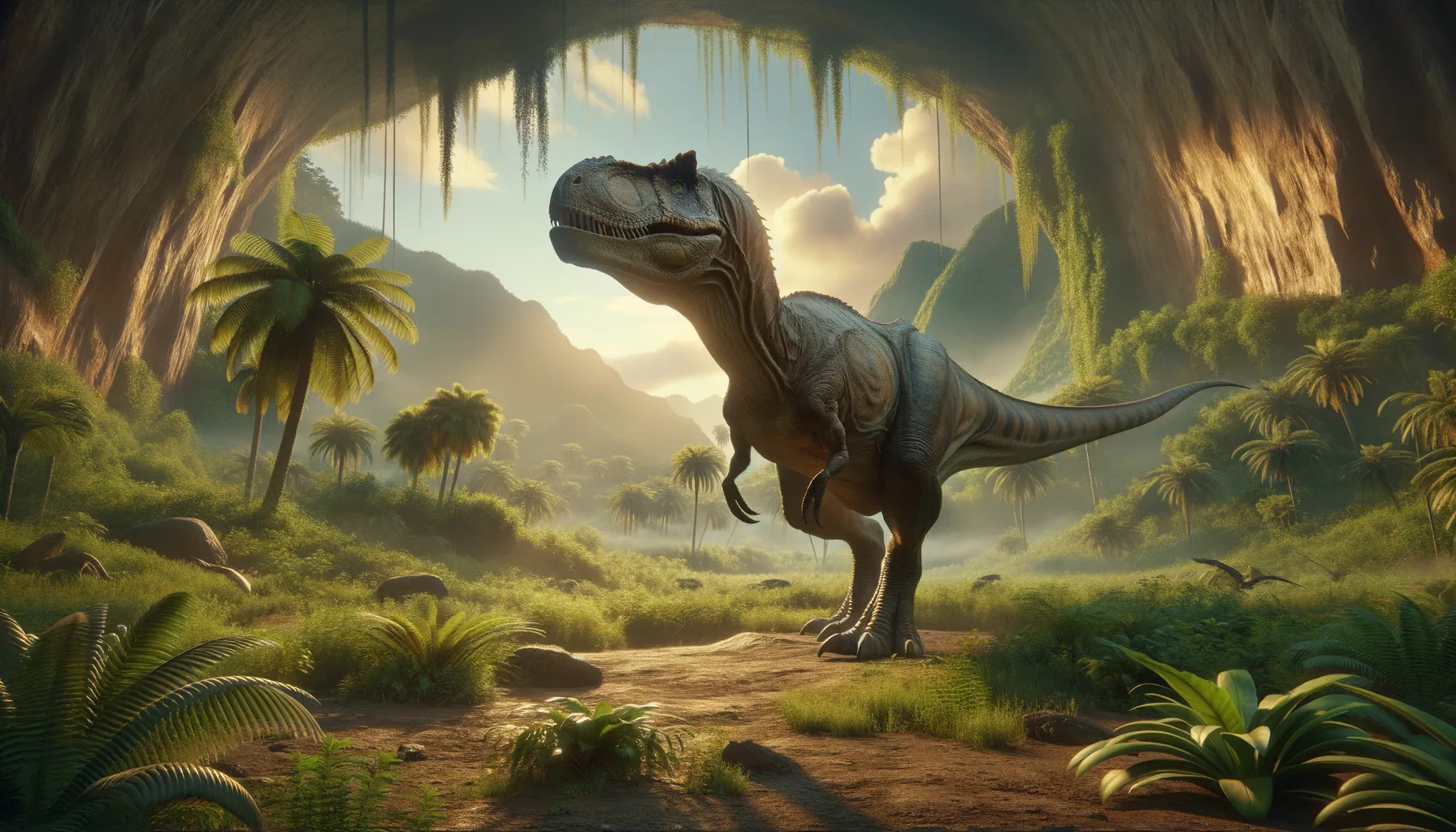
Compsosuchus
Swift and nimble predator of ancient India.
Period
Cretaceous
Length
Around 1.5 meters long.
Height
About 50 centimeters tall.
Weight
Weighed about 10 kilograms.
Compsosuchus was a small, bipedal dinosaur known for its agility and speed. It lived during the Cretaceous period, an era that saw many fascinating dinosaur species flourish. Though relatively light and small in stature, Compsosuchus was equipped with features that suggest it could have been a quick and effective predator. Its fossil discoveries have shed light on the diverse dinosaur population of ancient India.
Diet
Compsosuchus was likely a carnivore, feeding on small mammals, insects, and reptiles. Its sharp teeth and agile build would have made it an effective hunter in its ecosystem.
Hunting
It likely relied on speed and stealth to capture its prey. As a relatively small dinosaur, it had to be cautious, avoiding larger predators while hunting.
Environmental challenges
Compsosuchus faced predators much larger in size, making it crucial to remain nimble and alert. Its habitat also underwent changes during the Cretaceous period, with varying climates and landscapes altering the ecosystem. Adaptability would have been key to its survival amidst these fluctuating conditions.
Speed
It was likely a fast runner, aiding in its survival.
Lifespan
Estimated to have lived for around 10 to 15 years.
First discovery
Found in India during the early 20th century.
Fun Facts
- Compsosuchus was a small dinosaur that lived during the Late Cretaceous period, about 70 million years ago.
- Its name means 'elegant crocodile', reflecting its sleek and slender appearance.
- This dinosaur was likely a carnivore, feeding on small animals and possibly insects.
- Fossils of Compsosuchus have been found in India, providing insights into the prehistoric ecosystems there.
- Compsosuchus belonged to the group of theropod dinosaurs, which also includes famous species like Tyrannosaurus rex.
- It was relatively small compared to other dinosaurs, estimated to have been about the size of a large dog.
Growth and Development
Hatchlings would have been vulnerable, requiring rapid growth to enhance survival chances. Compsosuchus likely grew quickly to reach its modest adult size, developing the necessary speed and agility for hunting. Ongoing fossil studies aim to reveal more about its life stages and growth patterns.
Habitat
It inhabited regions of what is now India, likely favoring forested or semi-arid environments. These regions would have provided cover and a variety of prey animals. Understanding the eco-dynamics of these habitats can give insight into how Compsosuchus thrived.
Interaction with other species
Compsosuchus likely coexisted with various other dinosaurs, possibly competing for food and territory. Its small stature would have meant avoiding close encounters with larger, more dominant species. However, it might have had symbiotic relationships with other small dinosaurs and animals.
Natural lifespan
It had a relatively short natural lifespan of about 10 to 15 years.
Reproduction
Compsosuchus likely reproduced by laying eggs, with nests in hidden or protected locations. Younglings would have required nurturing and protection from predators. Paleontologists continue to search for more fossilized nests to better understand its reproductive habits.
Social behaviour
It may have lived in small groups or been a solitary creature. Social dynamics could have played a role during mating seasons or in rearing offspring. Further fossil evidence would help clarify its social structure.
Fossil locations
Fossils have been primarily found in regions of India, helping piece together its existence during the Cretaceous period. These discoveries contribute to understanding the broader ecological picture of Cretaceous India.
